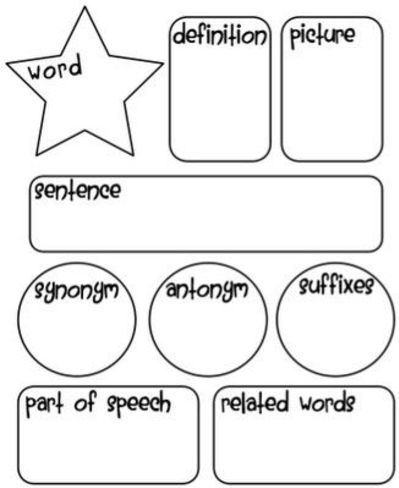|
| |
Using Word Web Graphic Organizers to Help Culturally and Linguistically Diverse Students with Academic Vocabulary and Reading ComprehensionBy Anastassia S. McNultyCulturally and Linguistically Diverse (CLD) students are a big part of the US school system, and teachers need to make sure that they are successful in all the areas of their education. Often times, English Language Learners (ELLs) become fluent in decoding texts but struggle with reading comprehension strategies. It is crucial to utilize as many tools as possible to aid them in developing these skills in order for them to be successful learners. It is also important to teach these skills through explicit instruction, such as think-aloud protocol, where teachers model to students the steps and the reasons for using various reading strategies. It is also necessary, if possible, to help students to develop their literacy in their first languages, as it can help to transfer the literacy skills from the native language to English. As teachers, we need to make sure that our students enjoy reading and become active participants of the process through carefully scaffolded instruction. So many English Learners struggle with reading comprehension, especially in the school setting, because they lack academic vocabulary skills. As research shows, students acquire verbal social language quickly through daily interactions with teachers and peers, but in order for them to learn reading comprehension and academic language, it needs to be taught and practiced explicitly with them on a daily basis. When teaching any vocabulary skills, including academic vocabulary and reading comprehension, it is very important to do so through a meaningful context, not in isolation. In the past, when working with English Learners in a classroom setting, I learned that just because my students were able to give me a definition of a word, it didn’t necessarily mean that they knew how to use it in a sentence or comprehend it with other words in sentences. Using graphic organizers, like Word Webs, were very helpful to my former students and to me as a teacher to understand their true level of understanding. Variations of this graphic organizer can be found on the Internet, but they all include very important features such as visuals, parts of speech, and, most importantly, a sentence that students have to write using the word, which then transfers into being able to read and understand of this word. One of the features of these types of graphic organizers is that students must draw a picture to illustrate each new word. Teachers can use these pictures to assess the students’ comprehension of the words. Example of a graphic organizer:  Graphic organizer from: https://www.edinburgh-speech-therapy-wordsteps.co.uk/developmental-language-disorder-dld-strategies-to-learn-vocabulary/ In the past, when I was teaching, I would choose no more than ten key vocabulary words for each unit and would use the Word Web to make sure that they understood them before we started reading. It is also very important to model how to use this graphic organizer first and then practice it before letting students use it on their own. One thing that, as educators, we need to remind ourselves of is that without understanding of academic vocabulary, students cannot fully comprehend academic texts, which become more and more complicated as they progress in school. Anastassia S. McNulty, PhD, is Associate Professor of Education at Concordia University Chicago. | |
| Spring 2019 - Spring 2019 |